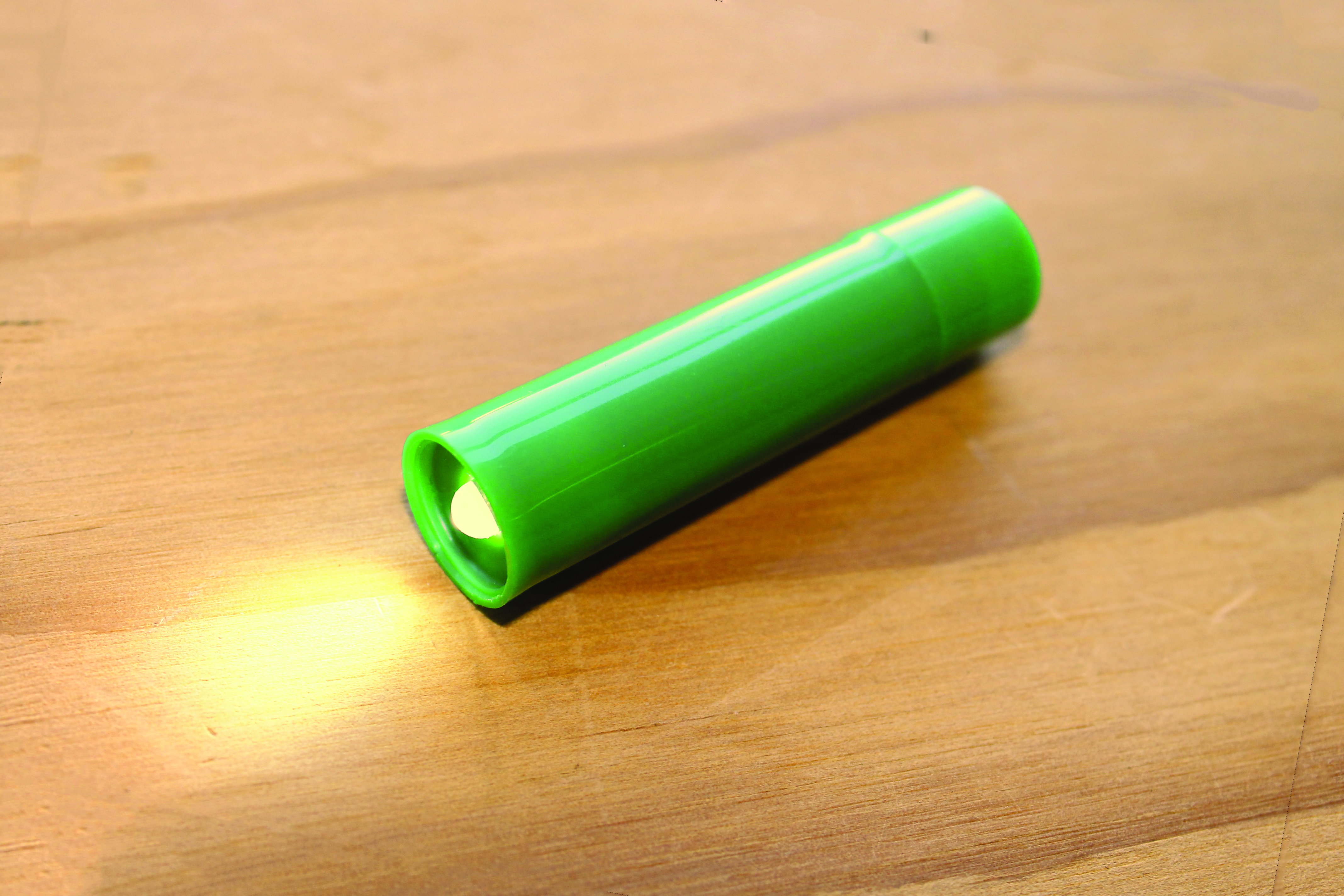There’s a well-known circuit, commonly called a “joule thief,” that can power a 3V white LED with a single 1.5V battery. Not only can this circuit boost the voltage high enough to light the LED, it can also do it with a battery that’s considered dead, “stealing” the last bits of energy in the cell.
I built my first joule thief on a breadboard with what was then a hard-to-come-by white LED. (Now you can find them all over.) I was able to pull all the other parts from my parts bins. This was my first circuit using an inductor, so I was glad I had saved all those ferrite bits! I even had a bin of mostly “dead” batteries that I hadn’t recycled yet. I felt like Victor Frankenstein or George Romero!
Scrounging and reusing materials is an important part of how I make things. (I’m also very cheap.) I always feel an extra bit of pride when I can show off a cool project and say: “… and I built it all from scrap parts!”
Once I had the breadboard version working, I thought about what I was going to put it in. I really wanted this flashlight to be a nice everyday carry, like my old AAA Maglite. I found a few tutorials for stuffing all the parts into a miniature incandescent bulb housing but that didn’t do it for me. While I was searching, I found a used-up tube of lip balm in an old pair of pants. Could I fit it all in there and an on/off switch besides? Only one way to find out!
Here’s a schematic diagram that shows how it goes together:
A. White LED
B. NPN transistor
C. 1K resistor
D. Transformer (wound ferrite bead)
E. AAA battery
F. On/off switch
People who understand electronics a lot better than I do have described how this circuit works — in essence, it’s a blocking oscillator, a transistor-transformer duo that rapidly switch each other on and off — but you don’t need to know the theory to build one. It’s easy enough!




